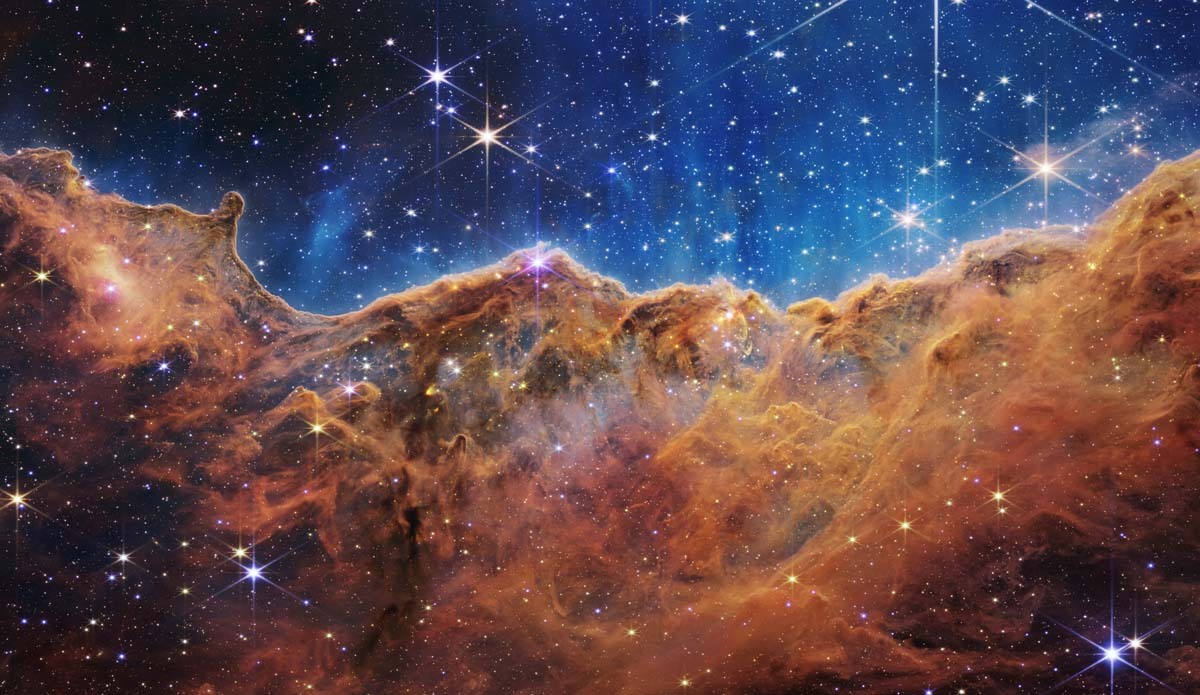Webb telescope wows with first images

At long last, eager astronomers—and the public—get to view snapshots of the universe provided by the James Webb Space Telescope, the largest, most complex, and most expensive space telescope ever built. Yesterday, in a sneak preview, the White House released one picture, a deep image bristling with thousands of distant galaxies. Today, NASA released four more that demonstrate Webb’s ability to scrutinize gas clouds and planetary systems closer to home.
The images—a product of Webb’s giant, majestic, gold-plated mirror—are not only sharper than those of the Hubble Space Telescope, but are also essentially different, capturing the longer, infrared wavelengths that are important for many branches of astronomy. For Webb’s engineers and designers, who have endured years of delay and a nerve-wracking 6 months of launch, deployment, and commissioning, the relief is palpable. “I’m feeling a mix of excitement and emotion. [Webb] has really delivered, and there will be a rush of new discoveries,” says Brant Robertson of the University of California (UC), Santa Cruz, who helped develop Webb’s near-infrared camera.
For most astronomers, the wait isn’t quite over yet, as their scheduled observations may not happen for weeks or months. Exoplanet researcher Laura Kreidberg of the Max Planck Institute for Astronomy (MPIA) is one of the lucky ones. As part of a large collaboration doing “early release science” with Webb, she’ll get to see their first tranche of data in 2 days. Nevertheless, “It’s a long wait from Tuesday to Thursday,” she says. But come Thursday afternoon when the data start to pour in, “I’ll make a big pot of coffee, put out some snacks, and we’ll sit and look at it.”
Originally conceived in the 1990s and built with European and Canadian contributions, Webb at times seemed like a cursed mission, buffeted by cost overruns, schedule slips, and technical hitches. Beset by criticism, “It was hard to keep the team at the edge of excellence,” NASA science chief Thomas Zurbuchen said at a recent briefing. But after a flawless launch on 25 December 2021, those trials are almost forgotten. “I don’t think any of us expected how well it went,” Zurbuchen says.
News Source